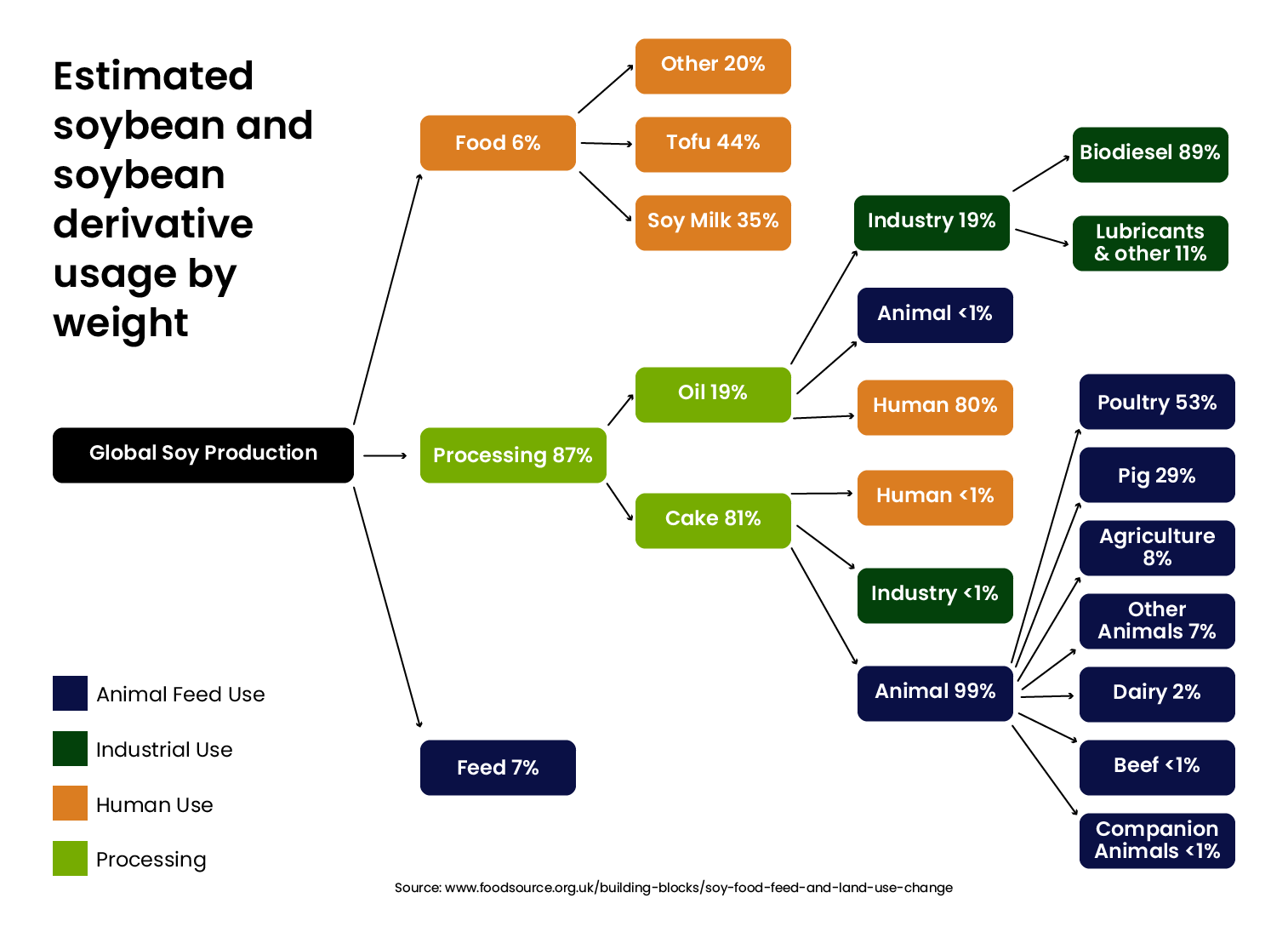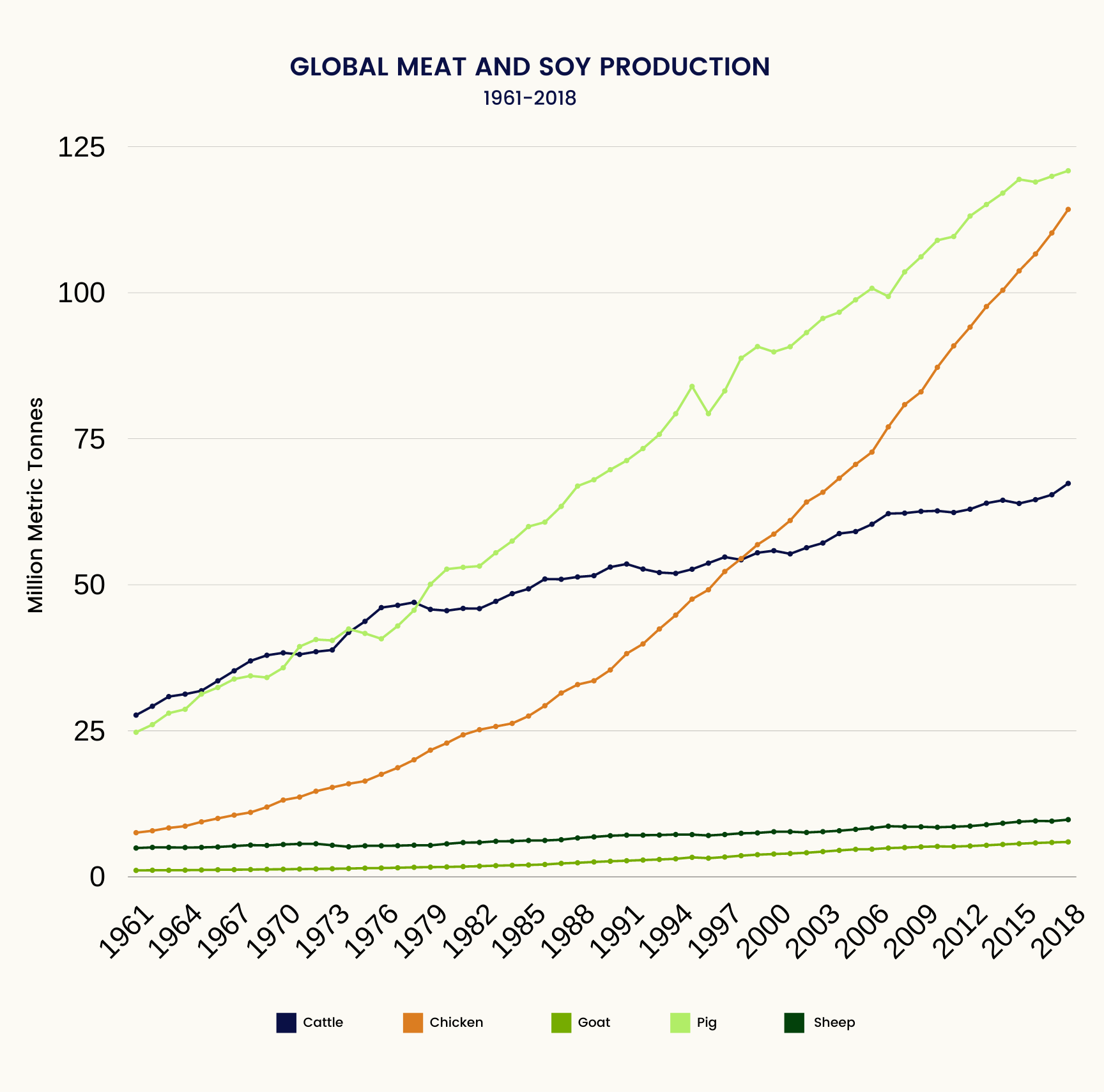1.1 Improvements in agricultural technology and investment in infrastructure have spurred the expansion of soy into ecologically important regions in South America
Tropical climates were initially thought to be unsuitable for commercial soy production. In South America, soy was first cultivated in subtropical areas of Southern Brazil and the Pampas region of Argentina, where the climate and nutrient-rich soils were ideal for growing early soy varieties.1 However, improvements in agricultural technology and the development of new soy varieties allowed production to expand into tropical biomes like the Amazon and Cerrado regions of Brazil, where land was abundant and relatively cheap.
Expansion of soy production into these new agricultural frontiers was spurred by government policies in the region. From the 1970s, governments provided subsidised credit, price support and technical assistance to producers, and increased investment in agricultural research and rural infrastructure. Large-scale commercial soy operations were established in previously isolated areas, facilitated by the development of infrastructure connecting these regions to global markets, including new roads, processing facilities and logistics hubs.2
In Argentina, lower taxes on the export of processed products (such as soybean meal and soybean oil) relative to primary products (such as uncrushed soybeans), made processed products more cost-competitive.3 This spurred investment in processing facilities, which promoted further growth of soy production.4
1.2 The growth in soy production is largely driven by increasing consumption of meat
Figure x shows the relative uses of soybeans, by weight, for animal feed (blue boxes), direct human consumption (orange boxes), and industrial uses (green boxes). Three-quarters of all soy, by weight, is used as animal feed in the production of meat for human consumption. Of this, just over half (53%) is used for poultry production, and a little under a third (29%) is used for swine. The rest is used for aquaculture, dairy and beef production, and food for companion animals.
The growth in soy production mirrors the increase in meat production since the 1960s (see figure x). The use of soy for animal feed was precipitated by various factors. In the first half of the twentieth century, US farmers and scientists discovered that using protein-rich soy cake in animal feed helped to increase livestock productivity. Use of soy cake in animal feed was further boosted in the late 1990s when the use of bone meal in feed was banned following the outbreak of bovine spongiform encephalopathy (BSE).5
But using soy as animal feed is an inefficient use of land. If more soy were consumed directly by humans, less soy would be needed to produce the same amount of food and nutrients (e.g. protein), potentially freeing land up for nature conservation. Soy provides high quality protein for human consumption, similar to animal-based protein sources. Its protein content is only slightly lower than that of cooked chicken or pork (around 19%, versus 25-35% for chicken or pork) and higher than many other grains and legumes (around 40%, as opposed to 20-30% for chickpeas and lentils). The protein provided by soy is also higher quality than most other plant sources (it contains considerable amounts of all nine essential amino acids which the human body cannot make), and the digestibility of the protein is high (i.e. the human body can use it).6 Because of its superior protein profile, soy consumption by humans is seen by many as an important component of a sustainable food system.

